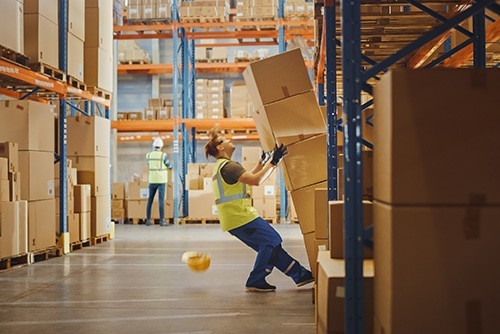Lack of Employee Training Could Cost Your Business Millions
Have you ever wondered why some restaurants and retail stores quickly post their “slippery when wet” signs while others don’t seem to worry? Strong, ongoing employee training may be what separates businesses who are quick to fix these hazards from the rest. No matter which employee forgot to post the sign, put down the cone, or mop up the water, the employer is typically the one ultimately responsible and liable for any slip-and-fall injury in her place of business.

Owners Can’t Be Everywhere, But Can They Be Held Liable?
One of the challenges facing business owners today is that they can’t be everywhere all the time. Because of their lack of omnipresence, they must rely on clear training, supervision and ongoing maintenance to succeed. When the public is exposed to potentially dangerous workplace conditions or machinery, there is always a risk that it could result in an injury or even death. In situations such as a slip-and-fall injury inside a retail store, restaurant or office, the owner could be held liable.
Did a Lack of Training Lead to the Incident?
Although immediate blame for a workplace accident may fall on the employee who improperly managed a piece of equipment, the blame tends to shift ultimately to the employer. Why? Because the employer is responsible for ensuring that the employee is adequately trained and/or certified, and given the proper safety gear for the circumstances. Even if initial training is completed, ongoing safety training and proper supervision are typically required to limit liability concerns.
Public-Facing Businesses
Every business that allows the general public to enter its premises assumes the responsibility associated with their visit. Accidents, like a slip-and-fall injury or items falling from over stacked shelves, can and do happen. For a victim to prove that the business was at fault, they must prove the following:
- The business reasonably owed the customer a duty of care to provide a safe environment
- The business breached their responsibility
- The breach caused an injury
- The injury resulted in financial damage
Who’s Responsible? Where Did It Happen?
Proving that the business reasonably owed customers a duty of care is often the easiest to prove in most slip-and-fall injuries, so long as the injury occurred in a public area. In some places, such as mechanics’ bays, construction jobsites, or manufacturing plants, the public is typically not allowed in specific areas due to the higher risks. Were signs posted and hard hats available for visitors? Was a warning sign on the wet floor? What about a mat at the entryway on rainy days? These are a few questions, typically asked after an accident, to determine if the employer provided a safe environment.
Does the Blame Lie With the Employer or the Employee?
In most instances, the employer is responsible, even if an employee fails to complete a task, such as cleaning up a spill when asked. However, exceptions do exist such as when an employee acts outside of the ordinary scope of their duties to harm someone else. The business can still be considered to have breached its responsibility if the employee did not fulfill their duty, such as cleaning the restrooms at a designated time or tending immediately to a spill. In California, the rule of “joint and several liability” also may apply in some cases, making each of the named defendants liable to pay a claim depending on the degree of fault assigned to them. Having an experienced personal injury lawyer at your side can help you determine how this rule could work in your best interest.
Did the Safety Breach Cause the Injury?
For the business to be responsible for an accident, the violation, or breach, also must have directly caused the injury. This can be more difficult to determine. For instance, if a floor is wet but the injured party tripped over something nearby due to their own clumsiness, the employer may not be liable, even though the wet floor may have been a breach.
The Breach Must Result in Damages
When someone is injured, damage is measured in several ways, including hard costs associated with the repayment of medical expenses, as well as:
- loss of earning capacity during the time of injury and recovery
- not being able to enjoy your previous activities due to long-term or chronic pain
- mental pain and suffering
An attorney can help you consider the extent of your damages and calculate the total value of your potential claim.
Accident-Prone Businesses
Some businesses are naturally more prone to accidents and associated injuries than others. Workplaces with inherent employee danger include construction, manufacturing, and retail to name a few. However, its public-facing businesses, such as nursing and residential care facilities, logistics and transportation, pools and gyms, restaurants and grocery stores that record the most accidents. The threat of legal action often drives business owners to make employee safety training a priority. These legal actions can help bring about real change that delivers a safer environment for all.